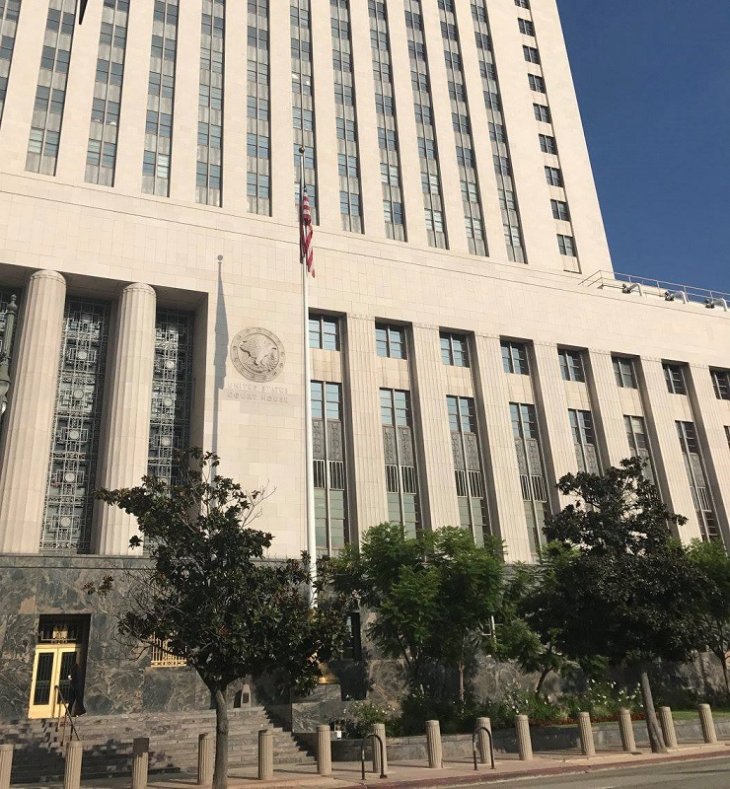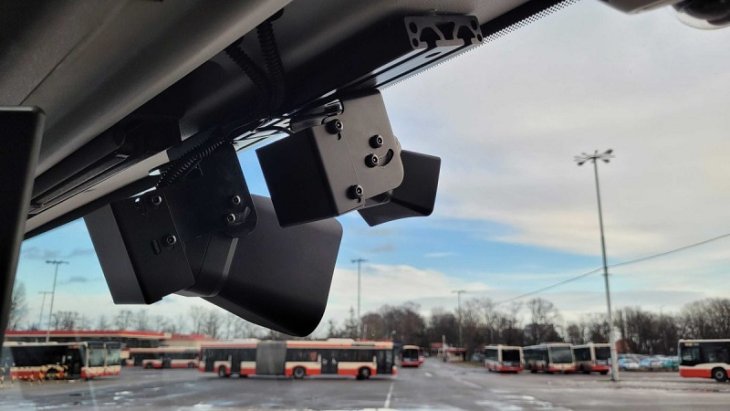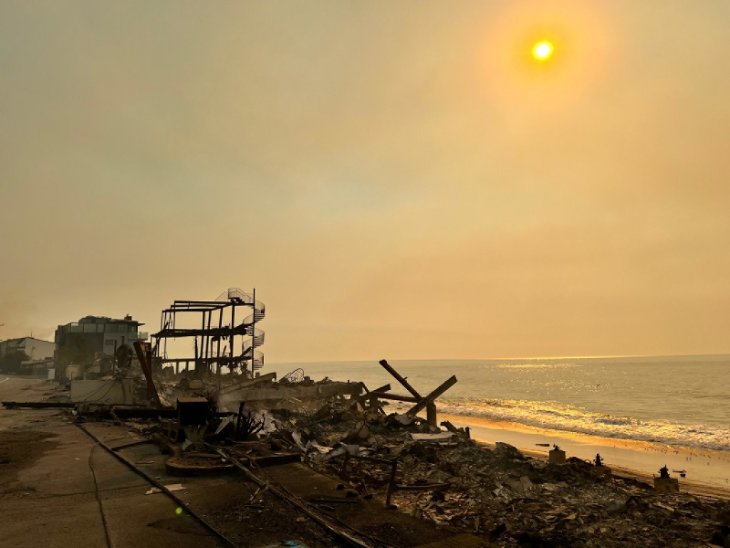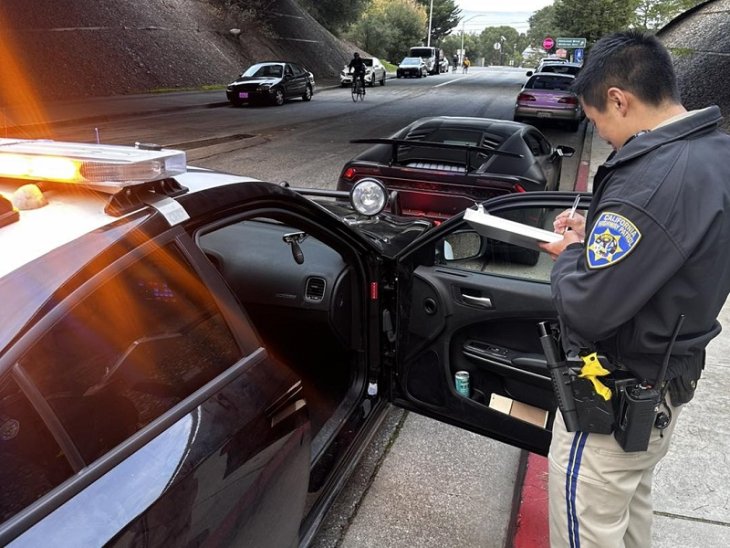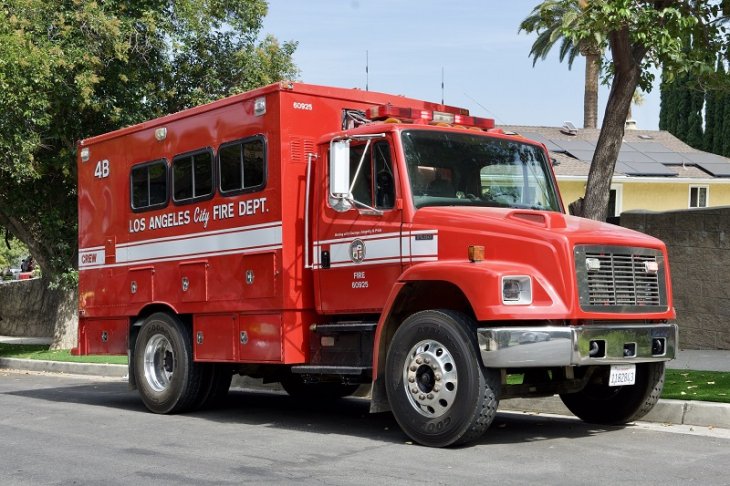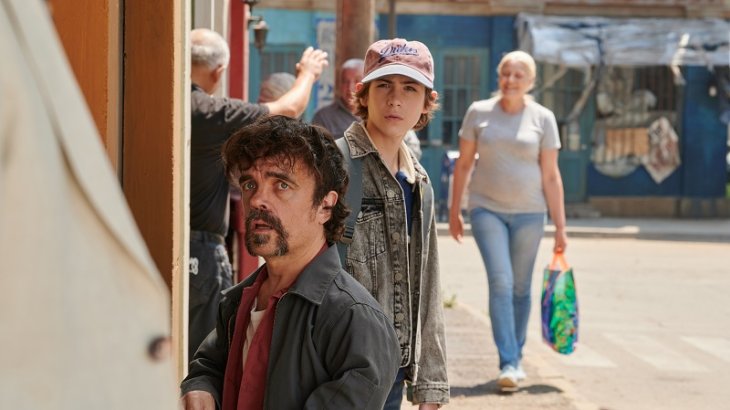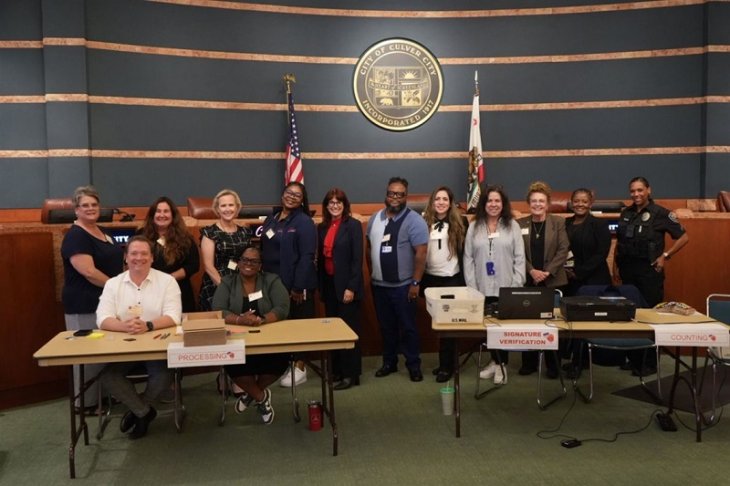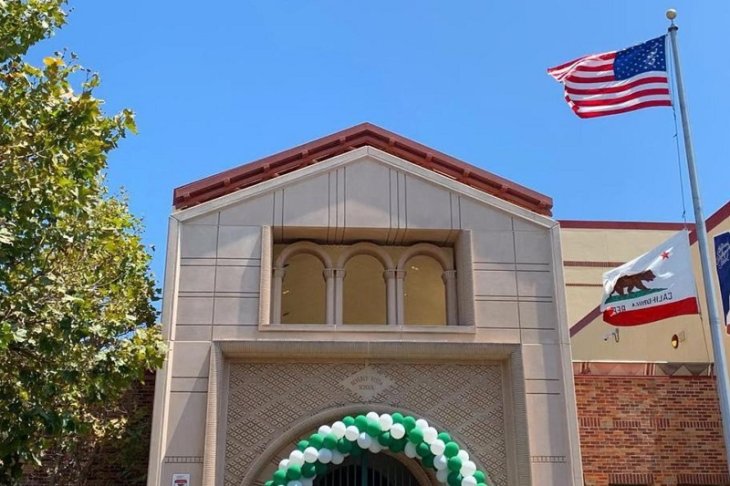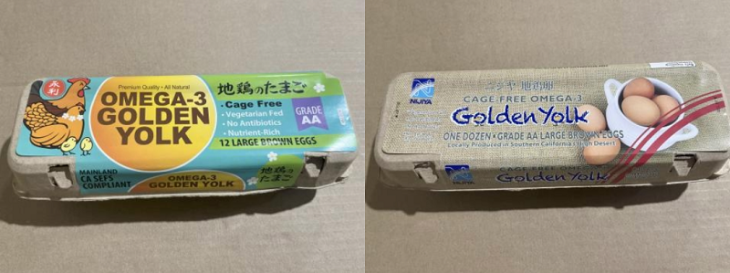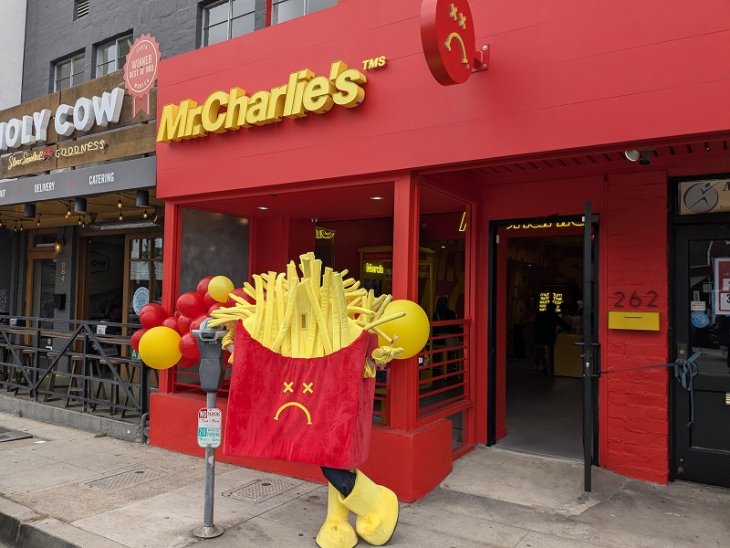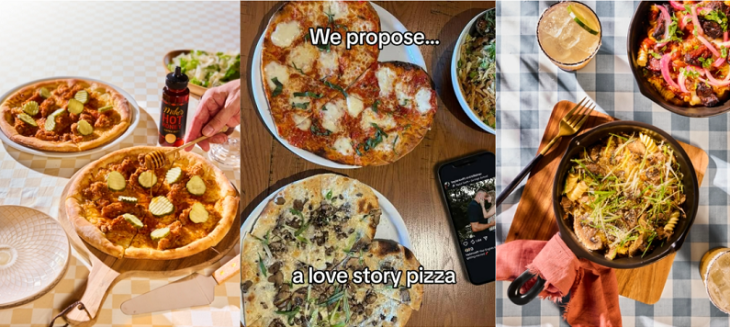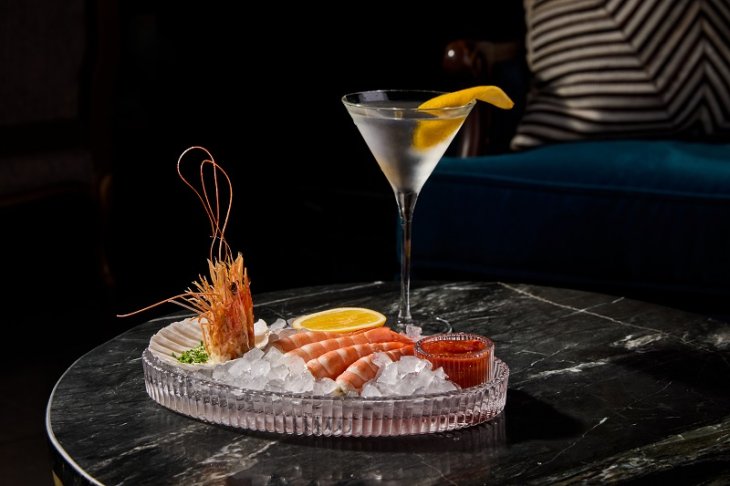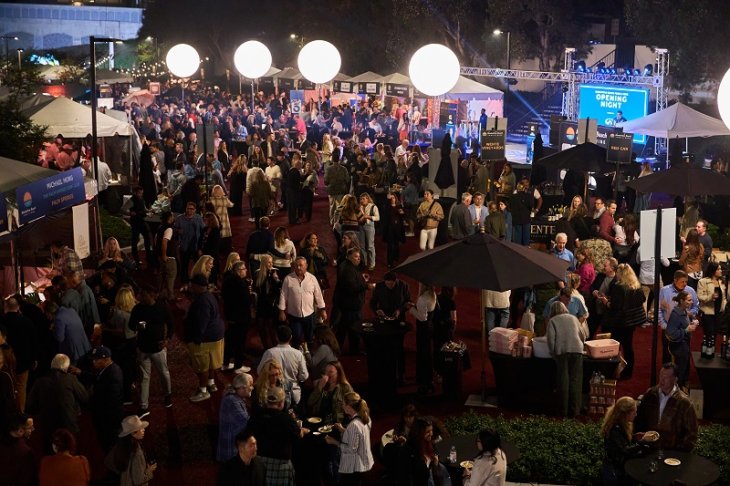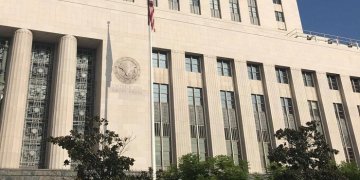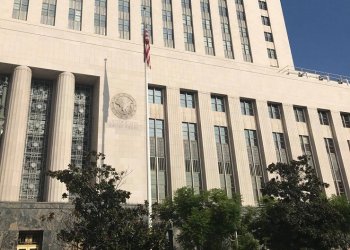Why do I love The Barry Building? It’s not a Mayan pyramid. It doesn’t have marble columns and gilt trimmings. It doesn’t shock or awe. That’s why I love it – it isn’t about power. It’s about community. And the beauty of simplicity. And it’s a beautiful expression of the best of the Southern California lifestyle.
The Barry provides a glimpse into post-war Los Angeles culture. One of the last remaining commercial examples of the internationally admired mid-century “California Modern†architectural style, its design gives physical expression to the idealism that animated scores of people who moved to Los Angeles after World War II, hoping for a better life, a life enriched and ennobled by well-engineered buildings and communities.
The architectural and social history of the Barry is irreplaceable. Just as visiting Farmer’s Market allows you to momentarily enter 1940s Los Angeles, visiting the Barry Building allows you to experience the vitality and optimism of 1950s Los Angeles. The “unprecedented cultural innovation and social change†of post-war Southern California is currently receiving international recognition and celebration as a result of the Pacific Standard Time: Art in L.A. 1945 – 1980 exhibitions across the city. The Barry Building exemplifies this zeitgeist. Reading about it is one thing, experiencing it through architecture is another.
How did it do this?
Completed in 1951, the Barry Building wasn’t designed to be grandiose or self-important, but rather an integral part of both its environmental and civic community. Architect Milton Caughey’s animating principles were Health, Humanity, and Ecology. These principles are expressed in the Barry’s design and detail. To integrate into its environment, the Barry allowed natural light to permeate its interiors, used cross-ventilation to minimize the need for air conditioning, and featured a screen on its eastern side to mitigate the effects of the harsh afternoon sun. Landscaping emphasized plants that would thrive naturally in its setting. To serve its community, outdoor hallways were designed specifically to encourage camaraderie amongst building inhabitants. Its courtyard opened both into the shops and offices and out onto the street. While humble, it was beautiful—with overlapping and hovering rectangular planes, slender columns made of newly-engineered materials that didn’t require massive bulking, and a flat roof that “lightened” the building, all in an understatedly elegant style. Simple, readily-available and easily maintained materials were used for construction, and a human scale was emphasized.
What is California Modern?
The California Modern movement sought to adapt Modernist principles for the California culture and environment. General modernist principles, as summarized in Wikipedia:
Modernist architects and designers believed that new technology rendered old styles of building obsolete. Le Corbusier thought that buildings should function as “machines for living in”, analogous to cars, which he saw as machines for traveling in. Just as cars had replaced the horse, so modernist design should reject the old styles and structures inherited from Ancient Greece or from the Middle Ages. In some cases form superseded function. Following this machine aesthetic, modernist designers typically rejected decorative motifs in design, preferring to emphasize the materials used and pure geometrical forms. The skyscraper, such as Ludwig Mies van der Rohe’s Seagram Building in New York (1956–1958), became the archetypal modernist building. Modernist design of houses and furniture also typically emphasized simplicity and clarity of form, open-plan interiors, and the absence of clutter.
(from “Pragmatic modernist architecture†section in “Modernism†entry)
In Southern California, this style capitalized on our local environment by harmonizing the flow between indoor and outdoor spaces, and using materials and passive environmental design elements to increase energy efficiency. Grandiosity and elaborate ornamentation were shunned. Streamlined simplicity, a feeling of openness, functionality, and engagement with environment were welcomed.
California Modern revolutionized domestic architecture with designs by such beloved architects as Richard Neutra, Pierre Koenig, and John Lautner. The style was further expressed in religious architecture (the original Leo Baeck Temple was a wonderful example), college campuses, and art museums. In buildings like the Barry, the style’s translation from the domestic into the commercial realm integrates the flow between public and private spaces.
Where does The Barry Building fit into Brentwood’s history and culture?
Brentwood has long been known as a neighborhood with progressive ideals. Above the Barry Building lies Crestwood Hills, which began as a utopian experiment in the late 1940s. With the belief that the quality of built environment matters, it required all its buildings be designed by architects, and emphasized community spaces. Today, 16 of these mid-century modern homes are listed as Historic-Cultural monuments of the City of Los Angeles.
Below this community, the commercial strip of San Vicente Blvd. was built. I understand from people who have lived here since the 1940s and ‘50s that this strip was also developed with community-minded (and issued) restrictions in place, including limitations on building heights and hours of operation. The median strip with its Coral Trees (designated monument #148) added beauty and grassy pedestrian space for all to enjoy. Beauty and Aesthetics were clearly considered integral to the well-being of a healthy community and healthy society. Healthy Living, Humanity, and Ecology may or may not also have been explicitly identified by Brentwood city planners as animating principles, but are beautifully evidenced in execution.
The Barry isn’t “just†about the International Style as interpreted by the California Moderns. It’s about urban planning and civic engagement. It was built with not just its natural landscape in mind, but also its civic, commercial one. The heart of the Barry—its courtyard—was designed to open out not just to the street, but onto the views of Coral Trees and pedestrians as well.
Brentwood remains a neighborhood with an exceptionally strong architectural identity. These include not just the 5 Historic-Cultural Monuments designated by the City of Los Angeles and the two dozen historically designated residences, but so many other treasures such as:
• Crestwood Hills with its many architecturally significant mid-century modern residences
• Other mid-century landmarks include Pierre Koenig’s own home and his Seidel House on Mandeville Canyon
• Richard Neutra’s Nesbitt House on Avondale Avenue
• Frank Lloyd Wright’s Sturges House on Skyeway Road
• Ray Kappa’s Benton Residence
• Frank Gehry’s Schnabel house
• Ricardo Legoretta’s Greenburg Residence
• Richard Meier’s Getty Center
In addition to the Coral Trees being a City Monument, the San Vicente Historic Corridor itself is officially designated by the City of Los Angeles as a Scenic Secondary Highway.
Brentwood’s history and culture is a vital part of that of Los Angeles and Southern California. Architect Milton Caughey’s animating principles for the Barry Building of Healthy Living, Humanity, and Ecology are basically the same principles that animated Greene and Greene’s Gamble House in Pasadena. Same impulses, different eras.
Don’t just save The Barry Building – Save the Coral Trees too!
The beautiful Coral Trees of San Vicente Blvd. are one of the first-recognized cultural treasures of the City of Los Angeles. Road cuts as a result of Green Hollow Square construction could permanently transform this linear, historic landscape, set a precedent, and invite further, cumulative impacts to it.
The City of Los Angeles’s registry of declared Historic-Cultural Monuments was started in 1962.
The Coral Trees were declared HCM #148 on March 3, 1976 – together with Frank Lloyd Wright’s Ennis-Brown House (#149). That’s three years after the Hollywood Sign (#111), but before Los Angeles City Hall (#150), Chateau Marmont (#151), Griffith Observatory (#168), Village Green (#174), and the Hollywood Walk of Fame (#194)! This median is a noteworthy part of the Southern California landscape and mystique – hence the busloads of tourists who visit us.
Preserving the Barry IS feasible:
Nationwide, developers have consistently argued that historic preservation isn’t feasible. Consistently, the opposite has proven true. Over the past 30 years, the National Trust for Historic Preservation’s MAIN STREET program has been successful from coast-to-coast. One of its core tenets:
Business districts must capitalize on the assets that make them unique. Every district has unique qualities like distinctive buildings and human scale that give people a sense of belonging. These local assets must serve as the foundation for all aspects of the revitalization program.
Preservation is a proven strategy for revitalization. People love history – look at Pasadena’s Colorado Avenue (which developers wanted to raze and rebuild). Fortunately, a terrific preservation architect (Marmol Radziner) has been retained to evaluate preservation options for the Barry (but not to do the work).
Similarly, although the Barry does not currently meet Americans with Disabilities Act access standards, this act is compatible with historic preservation – especially now. In the first years after its passage, developers struggled to find solutions and compromises. That learning curve is over. Dozens upon dozens of examples illustrate this truth.
The only thing stopping the Barry Building from being preserved is the developer’s will. Many with whom I’ve spoken assume that because he’s a very wealthy man, the current proposal is a done deal. It’s not—yet. Now is the time to contact Councilman Rosendahl and express your views.
Other Thoughts
As a neighborhood resident (I live on Barrington, between Brentwood Village and the San Vicente Historical Corridor), I wholeheartedly share all of the concerns about traffic and the erosion of our quality-of-life in Brentwood that Green Hollow Square would bring. Rather than being a legacy gift to the community as Mr. Munger has indicated he hopes it will be, I think as-is it will prove a Trojan Horse. I am well-served by all of the services and conveniences currently provided by existing businesses (it’s a good thing I am, because just leaving Brentwood now can take a half-hour). Long before any details of Green Hollow Square came to light, I first came to this initiative as a long-time lover of California mid-century modernism and also as a preservationist. I don’t think that just anything old should be preserved, but I do think that significant buildings and landscapes should.
With numerous closed storefronts throughout the Westside and specifically within Brentwood itself, the last thing we need is new construction of even more stores. The Internet is permanently and dramatically changing the nature of commerce in this country. The City of Los Angeles should address the ever-growing quantities of empty buildings and storefronts, and consider what to do with the excess retail storefronts that won’t be needed as people do much of their shopping online. The population may be expanding, but the needs of this expansion will not be addressed by outdated planning assumptions that have served us in past.
Finally, before Green Hollow Square, the proposed Bergamot Station Transit Village, or any other large scale development is approved, we need a regional traffic plan created for the Westside of Los Angeles and Santa Monica that shows how additional projects can be accommodated on our gridlocked streets. Proposed projects must be downsized to a level that can be accommodated by our infrastructure. We can’t continue to add to Westside gridlock by approving individual projects piecemeal and without taking into account the cumulative impacts of all projects, regardless of city borders. NOW is the time to tackle this, not after these huge additional traffic generators are built.
But I digress…what I really want to say is Save the Barry Building! Save the Coral Trees! Intact (but replace destroyed landscaping) and uncompromised.
